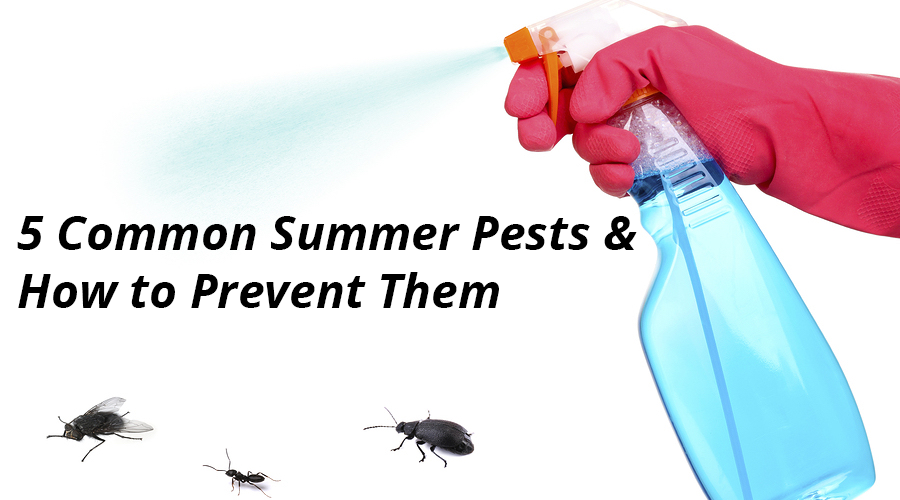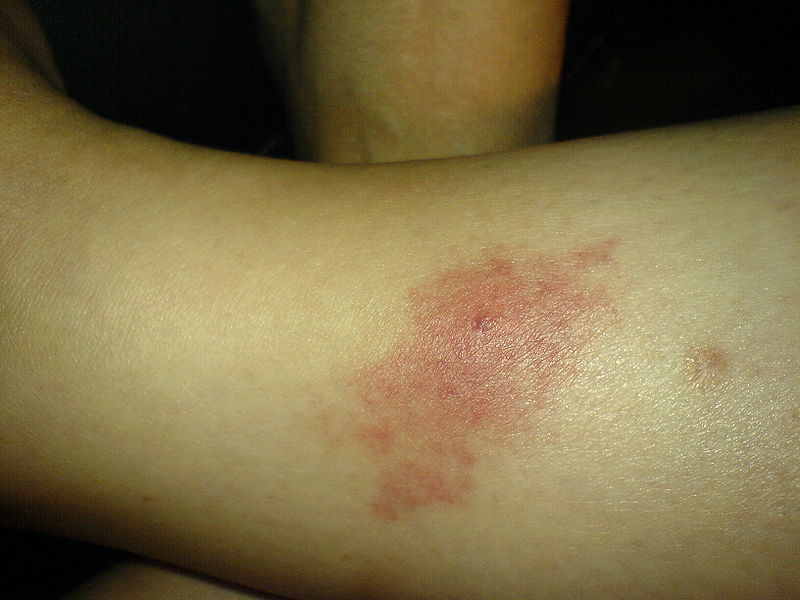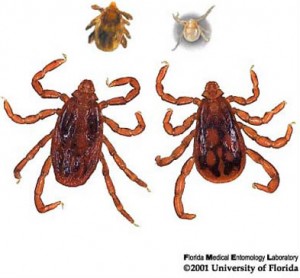READY TO GET STARTED?
REQUEST A FREE ESTIMATE
Fill out the form below or call (888) 466-7849 for a free, no-obligation estimate.

While pests in the house are a year-round nuisance here in the South, certain bugs are more active in warmer months. If you own or rent a home or apartment, you’re likely to come across one or all of these 5 summer pests. Here’s what you can do to prevent them.
Most of the ants you’ll find in your home won’t bite, but that’s not always the case. It’s best to eliminate any potential food sources and entry points to keep them out. You can do this by sealing cracks and crevices and by keeping a clean house. Take the trash out regularly, store food in sealed containers, and clean up spills immediately. Leaving pet food unattended can also attract ants and other pests, so keep the food in a sealed container when not being eaten by pets, and off of floors.
We’ve likely all been bitten at some point by mosquitoes. They’re active in warmer months and lay their eggs in standing water. In order to have the nutrients to lay these eggs, female mosquitoes need a food source – blood from humans and pets. If bitten, you may experience stinging or itching. In rare cases, mosquitoes will transmit diseases to their host. To prevent mosquitoes, eliminate any standing water around your home – debris, toys, bird baths, fountains, ponds, pet water bowls, etc. Wear mosquito repellent when outdoors, make sure pets are current on heartworm medication, and consider a professional mosquito control service from your local exterminating company.
As temperatures heat up, fleas come out to play by attaching themselves to a food source – usually your pets. Because flea allergies are common, the bites can be itchy and painful, and they transmit diseases, it’s important to keep your pets current on preventative flea medication. Give them baths regularly, keep pet beds clean, and vacuum often. If your pet gets infested with fleas, we recommend contacting a pest control professional. Fleas reproduce quickly and can be hard to get rid of.
Keeping flies out can be hard to do in the summer. Just like most other pests, they’re looking for food. Prevent flies from spreading bacteria throughout your home by keeping windows and doors closed, taking the trash out often and moving garbage cans away from the exterior of your home. Don’t leave food out and clean up dishes and spills immediately.
Roaches thrive in warm, humid temperatures. And because they eat almost anything, they can be hard to get rid of once inside your home. They’re most often seen in kitchens and bathrooms. Because they spread bacteria and often cause severe allergic reactions, it’s a good idea to contact an exterminator if you’re seeing roaches. Where there’s one roach, there’s probably a few hundred more hiding somewhere close. They reproduce quickly and are one of the most difficult pests to get rid of once your home is infested. To prevent roaches, keep a clean house, don’t bring in boxes or newspapers, and seal any cracks, holes or crevices.
The spring season is a time when all members of the family, including pets, wander outdoors to enjoy the sunshine and blossoming flowers. Unfortunately, it’s also prime pest season, which means pets are at risk of encountering hungry fleas and ticks that are in search of active hosts. Northwest Exterminating encourages pet owners to take precautions against these dangerous pests during the warmer months.
Fleas are more than just an itchy annoyance. Their saliva can cause anemia, dermatitis and can transfer tapeworms in dogs and cats. Ticks can spread bacteria to pets and cause tick paralysis, which occurs when a female tick attaches near a pet’s spinal cord. This condition can lead to muscle weakness, loss of coordination and in some cases, death from respiratory failure as chest muscles become paralyzed.
In addition to the health threats posed by fleas and ticks, both pests are small in size and extremely mobile, making them difficult to detect and get rid of once inside the home. It’s extremely important for pet owners to be cautious of these pests and contact a licensed pest professional if they suspect an infestation.
The National Pest Management Association, a nonprofit organization committed to the protection of public health, food and property from household pests, offers these tips to keep pets pest-free:
Source: NPMA
No-see-um’s, hop-alongs, beach fleas, biting midge, punky…these are just a few of the “cute” names that sand fleas go by! But cute they’re not! And they are very present in the low country area of Savannah, GA!
Sand Fleas reside on the beach and in other sandy areas during warm weather, double in numbers during the spring, produce a loud whine when in groups, and feed early in the morning and late at night. Sand flea bites may feel like a sting because they are very deep causing welts and lesions with severe pain and itching. The female bites for the blood protein needed for her egg laying, however this saliva can trigger your body to react and the bites can cause infections and fever viruses. Sand Fleas tend to “feed” on people with paler skin, as the skin is thinner making it easier to pierce.
To help keep these fleas at bay, try using an insect repellant similar to those used against mosquitoes. If you are bitten, do not scratch the welts, as scratching can cause swelling, itchiness, skin redness, and can lead to sand fleas burying themselves underneath the skin allowing them to continue feeding on blood. For bite relief, you can take a pain killer such as ibuprofen gels. Seek medical advice should the pain or itchiness worsen.
Barry Teubert
Northwest Exterminating
Savannah Service Center Manager
[email protected]
If you’ve spent any time in Savannah, Ga in the spring or fall, you know all about sand gnats, or as locals call them….the state bird. The sand gnat is not just the mascot for the Savannah Sand Gnats minor-league baseball team, but just like the baseball team, they’ll sting you, draw your blood and defeat you on the field.

Sand Gnat bite – Source
In the low country, the sand gnat is more of an issue than mosquitoes or fleas. Sand gnats live along waterways, such as the ocean, lakes, rivers, ponds, and marshes. They fly, bite, and suck your blood just like a mosquito, leaving behind
red, itchy bumps on the skin. Although blood has no nutritional value to the sand gnats, they need it so their eggs can mature prior to laying. Carbon dioxide draws sand gnats from up to 30 yards, they stay in a 300 foot zone where they breed around your home, fly less than 25 feet high and most adult females live for 2-3 weeks.
It is not unusual for the effects of a sand gnat bite to be more intense for a longer period of time than a mosquito bite. Unless you want to cover yourself from head to toe in the sweltering Savannah heat, be proactive. Commercial repellents with Deet can be useful to prevent biting, or you can try a local remedy such as taking garlic pills – that is, if you don’t mind smelling like garlic. However, a more “user friendly” remedy such as rubbing your arms with baby oil will prevent the sand gnats from biting as it provides a protective layer to your skin that the gnats can not penetrate.
For sand gnat treatment at your home or business, Call the Mouse! 888.466.7849 or visit online at www.callnorthwest.com
Barry Teubert
[email protected]
Each warm season brings questions from homeowners and pet owners regarding ticks. We worry about our furry family members and ourselves if we plan on spending time outdoors, especially in or around wooded areas.
The brown dog tick is one species of tick that should be cause for concern, especially for those who have dogs. Although they feed on a wide variety of mammals, dogs are their preferred host. These ticks are unique in that they can complete an entire life cycle indoors. They feed on the host for about a week before dropping off and laying their eggs…up to 5,000 eggs!! After she’s done laying her eggs, she dies. The full life cycle of a brown dog tick lasts just over two months and generally are long living creatures.

Tick Life Cycle – Source
A brown dog tick infestation can develop in high quantities and very quickly. Oftentimes, ticks go unnoticed on dogs until the ticks are spotted throughout the home.
To protect your home and your dog from brown tick infestation, here are some brown dog tick control tips:
For more detailed information on the brown dog tick, visit http://www.entnemdept.ufl.edu/creatures/urban/medical/brown_dog_tick.htm.